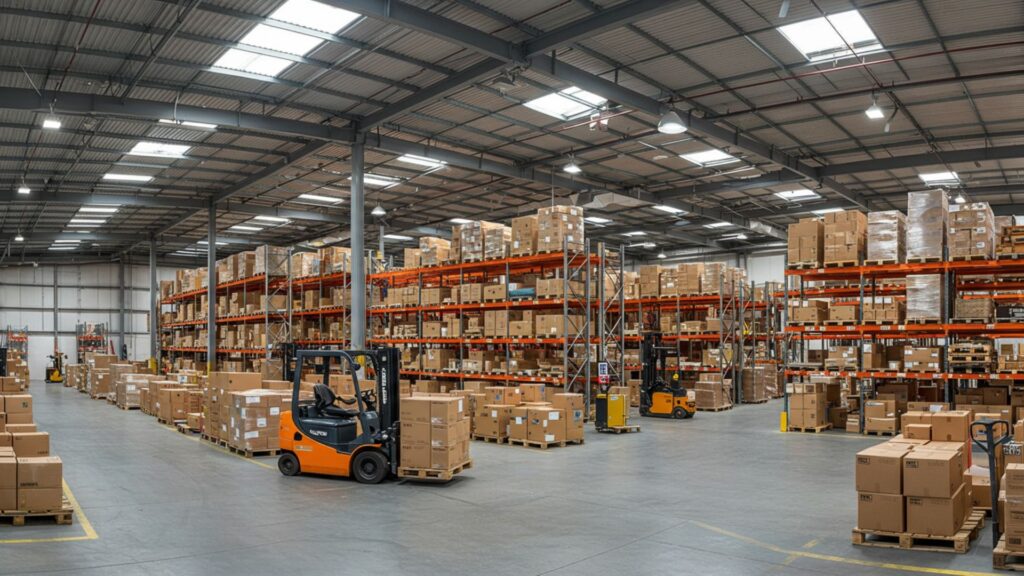In today’s fast-paced supply chain world, companies constantly search for ways to streamline operations and reduce costs. The rise of automation has completely changed how warehouses function, making them smarter, faster, and more efficient. Understanding how warehouse automation improves efficiency helps businesses see why investing in advanced technology is no longer optional but essential for long-term growth.
What Is Warehouse Automation?
Warehouse automation refers to using technology and robotics to perform tasks that were once carried out manually. From automated guided vehicles (AGVs) moving pallets across large facilities to robotic arms handling delicate items, automation has become a backbone of modern logistics. Automated storage and retrieval systems (AS/RS) also play a key role by minimizing errors and maximizing storage space.
Unlike traditional manual methods, warehouse automation integrates advanced tools such as sensors, artificial intelligence, and real-time data tracking. These systems work together to create what many call smart warehouses—spaces that respond dynamically to demand while ensuring accuracy and speed.
Another Good Read: Why Smart Ovens Are Becoming Popular In Modern Homes
Why Efficiency Matters in Warehousing
Before exploring how warehouse automation improves efficiency, it’s important to understand why efficiency matters in the first place. Warehouses serve as critical hubs in the supply chain, storing goods, preparing orders, and ensuring timely deliveries. Any delays or errors ripple through the supply chain, affecting customer satisfaction and profitability.
When a warehouse operates efficiently, it reduces labor costs, prevents stockouts, lowers error rates, and accelerates order fulfillment. This directly translates into better customer experiences and stronger bottom-line results.
How Warehouse Automation Improves Efficiency
Now let’s break down exactly how warehouse automation improves efficiency across different aspects of warehouse operations.
1. Faster Order Fulfillment
Automation speeds up order picking, packing, and shipping. Automated conveyor belts, sorting systems, and robotics ensure that products move quickly from storage to dispatch. This not only reduces lead times but also allows companies to handle higher volumes during peak seasons.
2. Reduced Human Error
Manual order picking is prone to mistakes, leading to costly returns and dissatisfied customers. Automated systems powered by AI and sensors drastically lower error rates. For example, AS/RS systems ensure items are picked accurately, while barcode scanners and RFID technology confirm the right product reaches the right destination.
3. Optimized Space Utilization
Warehouses often face challenges with limited space. Automation enables smarter layouts by using vertical storage and compact racking systems. With robotic cranes and shuttles accessing products stored high above, businesses can maximize every square foot of their facility without compromising accessibility.
4. Lower Labor Costs
One of the clearest ways how warehouse automation improves efficiency is by reducing dependence on manual labor. While workers remain essential, automation takes over repetitive and physically demanding tasks. This shift lowers labor expenses while allowing employees to focus on problem-solving, quality control, and other value-added activities.
5. Better Inventory Accuracy
Accurate inventory management is vital for supply chain optimization. Automated tracking through warehouse management systems (WMS) and real-time monitoring ensures businesses always know what stock they have, where it’s located, and when to reorder. This reduces stockouts and overstocking problems.
6. Enhanced Safety
Automation also improves workplace safety. Robots handle heavy lifting, reducing strain and injury risks for workers. Automated vehicles follow programmed routes, avoiding collisions and accidents. A safer warehouse translates to fewer disruptions and lower insurance costs.
7. Scalability for Growth
As businesses expand, scaling manual warehouse operations becomes difficult and costly. Automation allows facilities to handle increased demand without proportional increases in labor or space. Smart warehouses can easily adjust to higher order volumes, seasonal surges, and global supply chain shifts.
Types of Warehouse Automation Technologies
Understanding how warehouse automation improves efficiency requires looking at the specific technologies driving this transformation:
- Warehouse Robotics: Robots handle picking, packing, and palletizing tasks with precision.
- Automated Storage and Retrieval Systems (AS/RS): Machines retrieve items from storage faster than humans ever could.
- Warehouse Management Systems (WMS): Software that monitors inventory, order tracking, and real-time performance metrics.
- Autonomous Mobile Robots (AMRs): Flexible robots that move goods around warehouses with ease.
- Automated Guided Vehicles (AGVs): Vehicles that transport heavy loads safely and efficiently.
These technologies often work together to deliver maximum efficiency in smart warehouses.
Challenges of Warehouse Automation
While the benefits are undeniable, businesses must also consider challenges when adopting automation. High upfront costs can deter smaller companies. Training staff to work alongside machines requires time and effort. Additionally, integration with existing systems can be complex.
However, the long-term advantages—reduced costs, faster operations, and better customer satisfaction—usually outweigh these challenges. Businesses that adapt sooner gain a competitive edge in their industry.
Buying Guide: Choosing the Right Automation Solution
If you’re considering warehouse automation, here are key factors to keep in mind:
- Business Size and Needs: Small businesses may benefit from modular automation like mobile robots, while large facilities may require full-scale AS/RS systems.
- Budget: Calculate long-term savings, not just upfront costs. Many automation investments pay for themselves within a few years.
- Scalability: Ensure the system can grow with your business.
- Integration: Choose technologies that integrate smoothly with your current warehouse management system.
- Support and Maintenance: Reliable service from vendors ensures consistent performance.
By carefully evaluating these aspects, businesses can find automation solutions tailored to their operations.
Final Thoughts
Warehousing has evolved far beyond rows of shelves and manual labor. Today, automation stands at the core of operational excellence. Companies that understand how warehouse automation improves efficiency position themselves for success in a highly competitive market. With faster order fulfillment, improved accuracy, and scalable systems, automation is not just an option—it’s the future of supply chain optimization.





